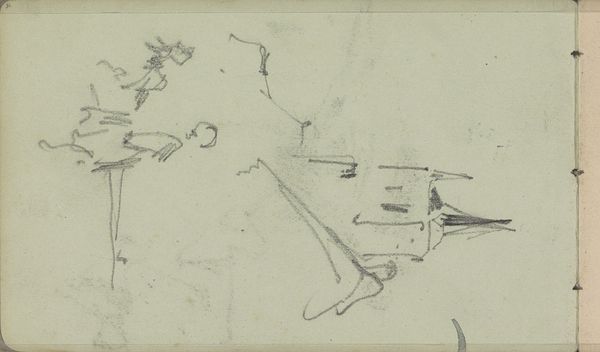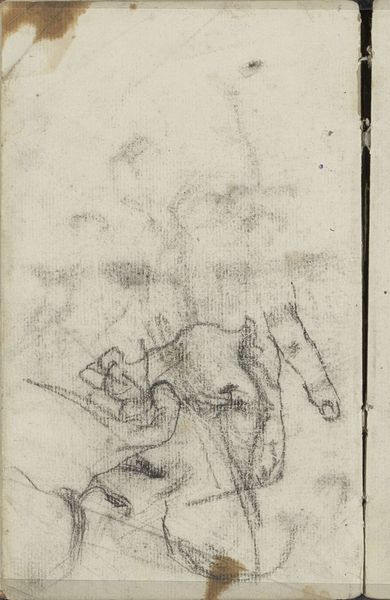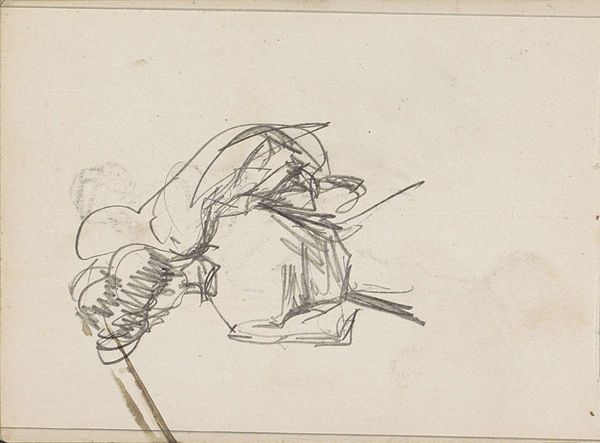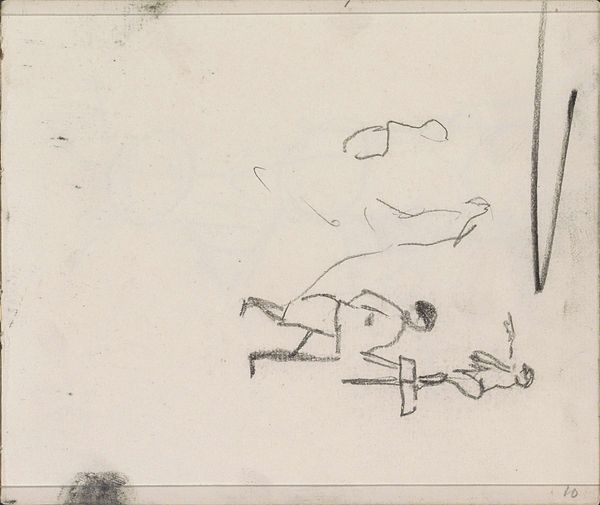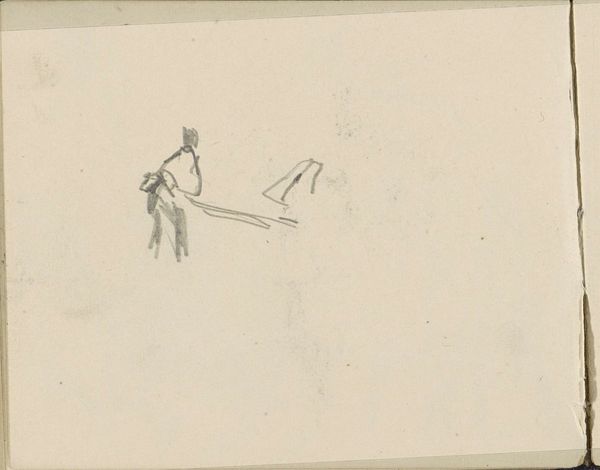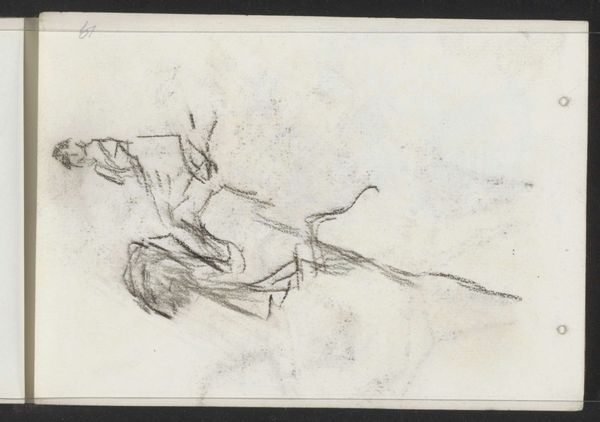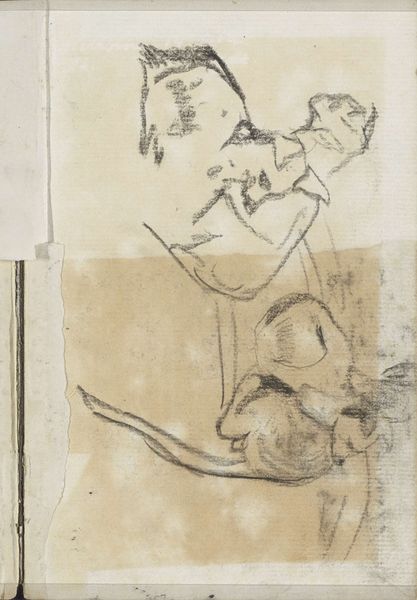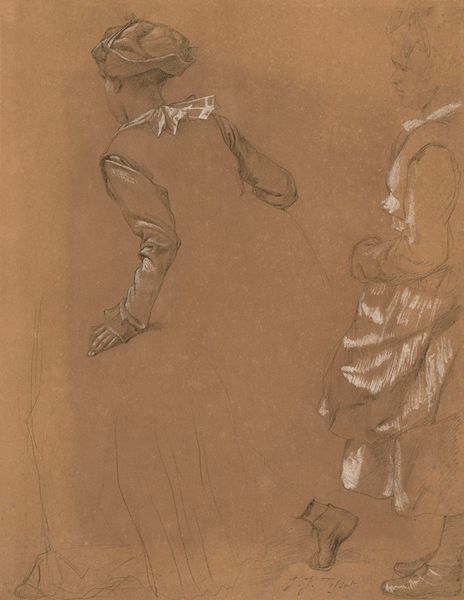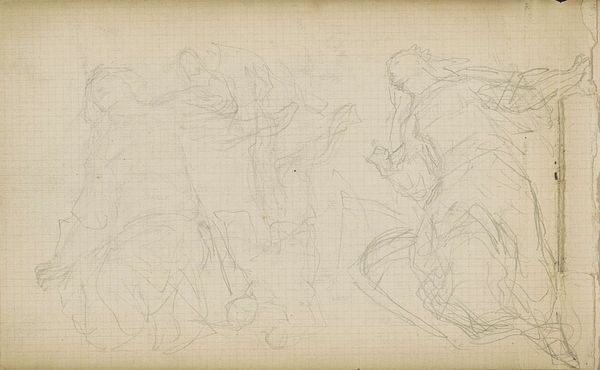
drawing
#
drawing
#
amateur sketch
#
light pencil work
#
pencil sketch
#
incomplete sketchy
#
study drawing
#
personal sketchbook
#
sketchwork
#
detailed observational sketch
#
fantasy sketch
#
initial sketch
Copyright: Public Domain: Artvee
Curator: What we have here is "Drapery Study; Two Figures Pulling a Pole," a drawing by John Singleton Copley, created sometime between 1785 and 1786. It offers a glimpse into the artist's process, revealing his engagement with form and composition. Editor: It has this very unfinished, fleeting quality, doesn’t it? The figures feel like they are caught in mid-action, as if about to spring to life. And I immediately focus on the tangible folds of drapery, how the light plays across them, defining weight and texture. Curator: Absolutely. Copley, even known for his portraits and historical paintings, shows here an engagement with the fundamental elements of artistic practice. These preparatory sketches provide valuable insights into his studio practice. This sheet allows us to see how academic and early modern artistic practice and institutions often worked in lockstep to form a basis for a shared social understanding. Editor: Looking at the use of pencil, the varying pressure and line weights create depth, especially in rendering the fabric. It underscores the material process involved in transforming a flat surface into an illusion of three-dimensionality. And the pole... I see almost the men grappling and toiling to move material that is the genesis of this art. Curator: Exactly! The subject itself provides a study in class representation in that period, right? There’s a certain heroic quality embedded in it that reveals prevailing aesthetic values that are being challenged during his lifetime with political and social revolution in America and France. Editor: Yes, this focus on the mundane work, the sheer physical effort—the drawing becomes a meditation on labor itself. What did this entail as a work commission in Copley's context, what sorts of consumption patterns would this engender as his brand name became tied to material and product? Curator: Considering that he was navigating a rapidly changing art world, caught between American and British identities, one can argue Copley was, at some level, critiquing art's power and how the industry could affect broader perceptions of values in his immediate surroundings. Editor: Looking at this now, it is so much more than a simple study of drapery. I’m so interested in how process reveals commentary, then. Curator: Me too, every study tells its own tale.
Comments
No comments
Be the first to comment and join the conversation on the ultimate creative platform.
